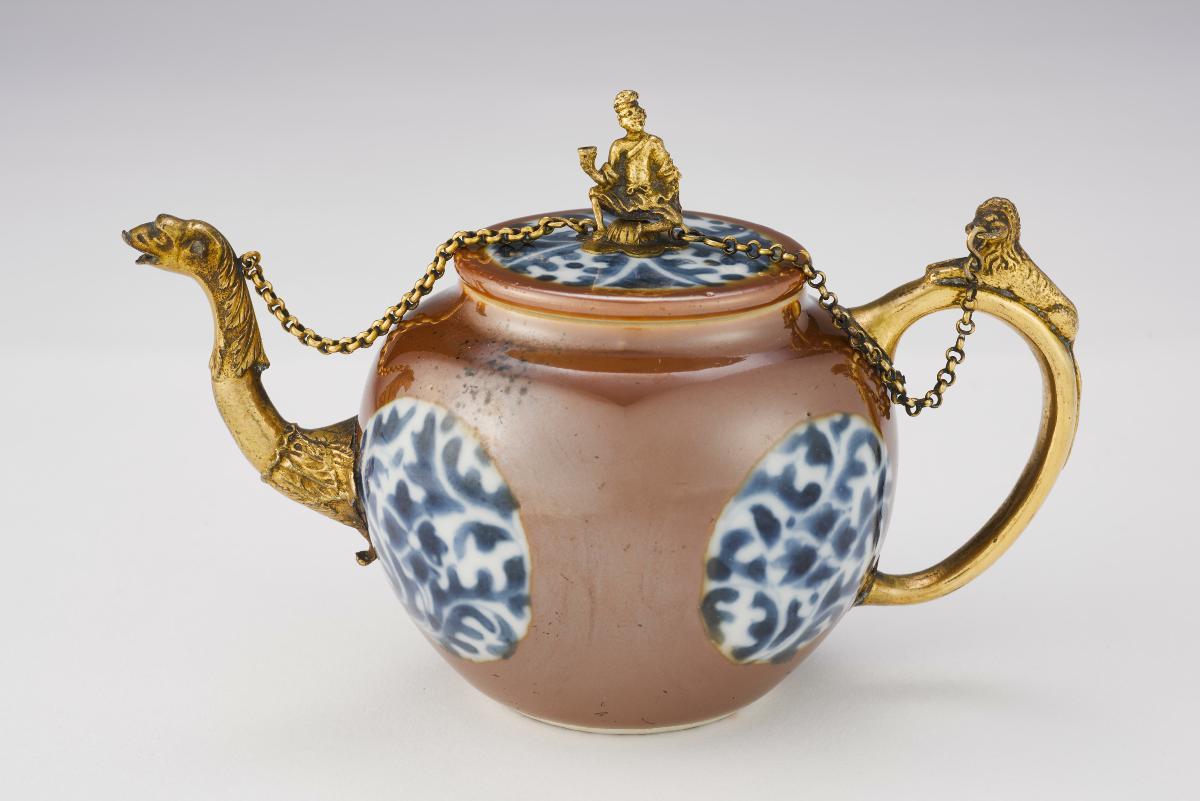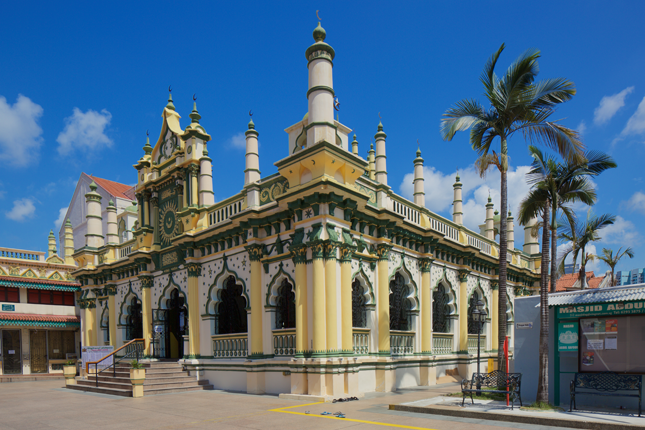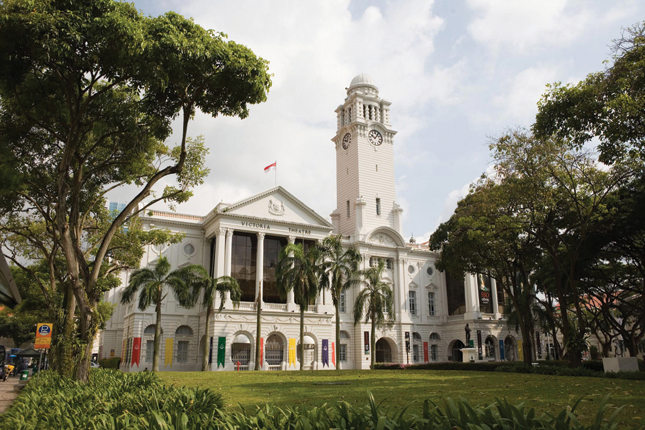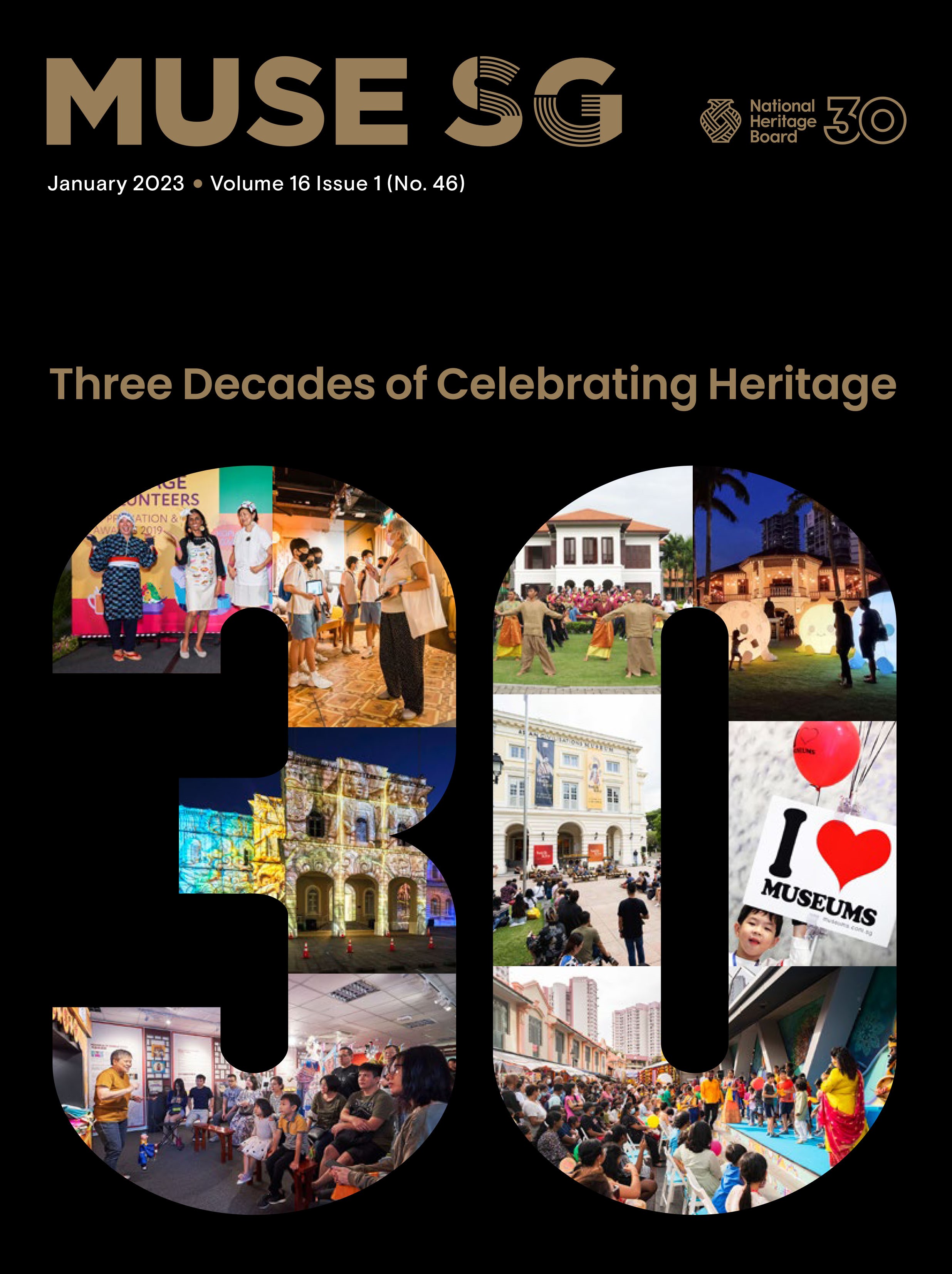The exterior of this bowl features an openwork honeycomb and flower-head pattern, revealing a body decorated with underglaze blue floral sprays. A swastika pattern borders the rim and a roundel on the interior is decorated with flowers. Elegant silver-gilt mounts form the rim, foot, and handles. Double-walled objects with a pierced outer wall are called linglong (“devil’s work”) in China due to the time-consuming nature of the work. The bowl was made for export in the kilns at Jingdezhen, China. The mounts were added later, probably in the Netherlands. Chinese porcelain was an exotic and highly valued product in 16th and 17th century Europe. It was often perceived in the same way as natural curiosities like ostrich eggs, serpentine, and coconuts. Like those materials, it was similarly ornamented with expensive mounts chosen to enhance the value of the piece. Mounted bowls like this would have made an attractive sideboard ornament or could have been part of a collector's “cabinet of curiosities”.


















